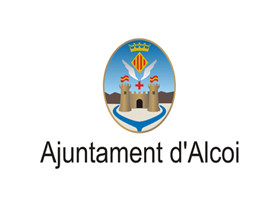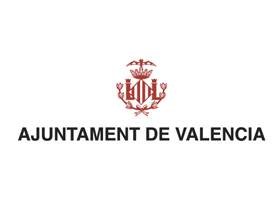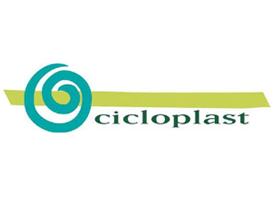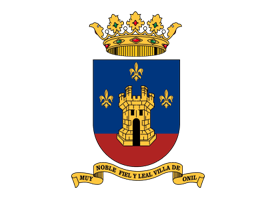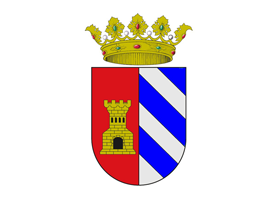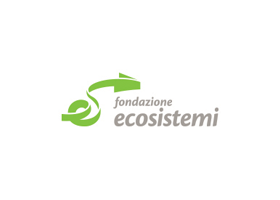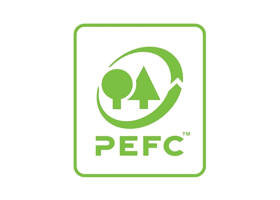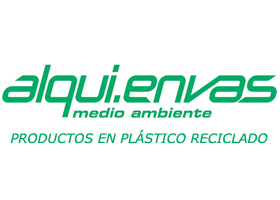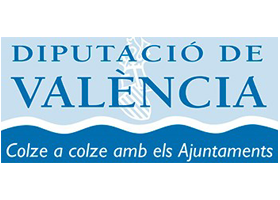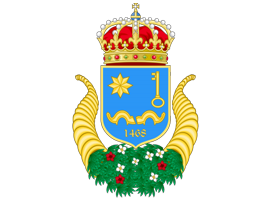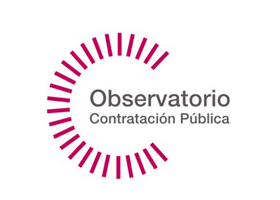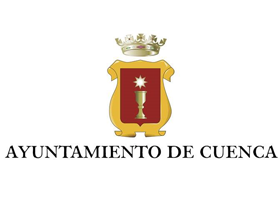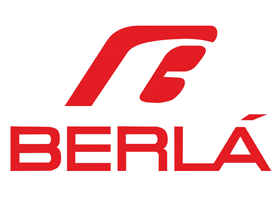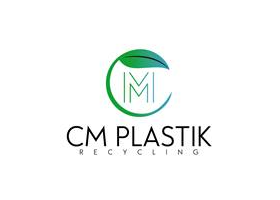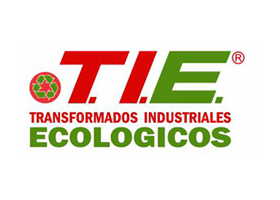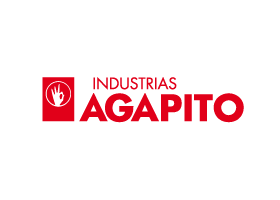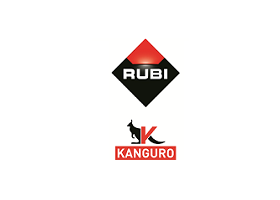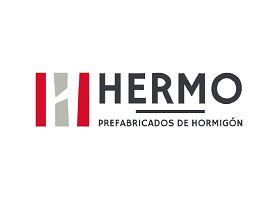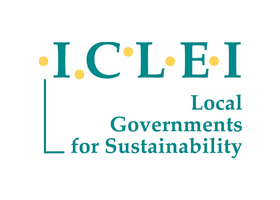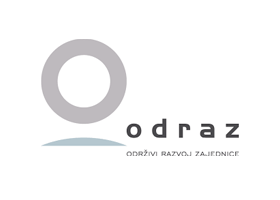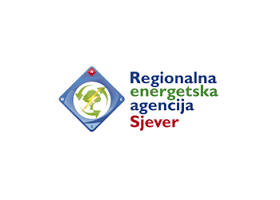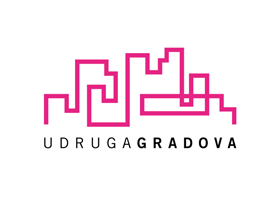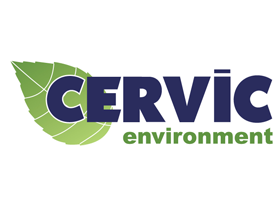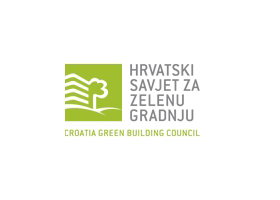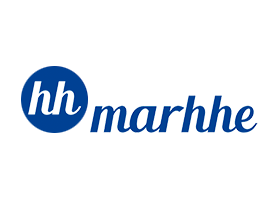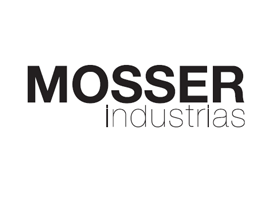In this section, you can access to the latest technical information related to the FUTURE project topic.
A whole-body imaging system, a dual washer and dryer concept, an augmented reality viewer, a temperature-adjustable coffee mug and a multidevice wireless keyboard are among the 2017 International Design Excellence Awards' top winners with significant plastics content.
The Industrial Designers Society of America of Herndon, Va., received more than 1,650 IDEA entries from 54 countries. Judges selected 77 top winners — those eligible for gold and silver recognitions — and 64 bronze winners.
IDSA announced the gold and silver IDEA winners Aug. 19 at a ceremony in Atlanta.
In addition, the Plastics Innovation award, sponsored by the Plastics Industry Association was announced during the event. It went to the Makeblock Neuron, a building block platform for STEM education and practice.
Designers at IU+Design Co. Ltd. and Makeblock Co. Ltd., both of Shenzhen, China, also won a gold award for the Makeblock.
Materials include plastics and silicone rubber.
A Neuron electronic device incorporates an intuitive flow-based Makeblock software application for programming at all educational levels of science, technology, engineering and mathematics disciplines.
More than 30 kinds of blocks can fulfill different functions. Each block can bind with others to become a multifunctional smart electronics solution.
Credits go to IU+Design's Jiye Shen, Shenghui Jia and Junyao Li and the Makeblock R&D center's Yiyue Zheng and Pu Liu.
Owen Foster was chair of the 24-member judging panel that conducted the final 2017 IDEA evaluations May 5-9 at the Henry Ford Museum of American Innovation in Dearborn, Mich.
Foster, an educator, co-founded the SHiFT design community in Tuscumbia, Ala., and directs the Aether Global Learning think tank for transformational learning and leadership.
Here are top winners that took either a gold or silver IDEA recognition:
Samsung Electronics Co. Ltd. The FlexWash and FlexDry Vectra WB360 system
An HS Design Inc. team in Gladstone, N.J., won a gold award for the Vectra WB360 3D whole-body imaging system for biotechnology firm Canfield Scientific Inc. of Parsippany, N.J.
Designed primarily for dermatology, the system entered the commercial market in its final form in February.
In a single capture, the WB360 can image a person's entire skin surface in macro-quality resolution. Typical total body imaging requires about 25 photographs.
Plastics include plug-assisted vacuum- and pressure-formed acrylic-PVC Kydex-brand sheet for external housings and an injection molded blend of polycarbonate and ABS for both pod housings with aluminum base plates and equipment boxes for white light flashes.
Custom 35-durometer silicone gaskets are used for pod-face alignment with custom closed-cell polyurethane foam gasket material for pod sealing and custom closed-cell polytetrafluoroethylene foam gaskets for shock absorbers and gap fillers. The diffuser material is made of cast acrylic, and the leveling feet are rubber.
The WB360 uses integrated software, 92 Canon T-5 cameras and 46 stereo vision pods for polarized and non-polarized lighting.
A clinician can map, measure and track pigmented lesions and record and monitor distributed skin conditions such as psoriasis, vitiligo, cutaneous T-cell leukemia and neurofibromatosis. The system is also useful for burn management, lymphedema management and plastic and reconstructive surgery.
Kenson Plastics Inc. of Zelienople, Pa., thermoforms the main housing components with machined inserts and air-actuated cylinders.
Midwest Mold Services Inc. of Roseville, Mich., injection molds the camera pods and flash housings. Wepco Plastics Inc. of Middlefield, Conn., compression molds the rubber gaskets for the pod assembly.
In early creative stages, HS Design used Microsoft Corp.'s HoloLens augmented reality viewer (also an IDEA top winner) to assess design and aesthetic details. Canfield's software, electrical and optic teams were involved throughout the project.
To achieve the desired goal, designers and processors pushed some of the polymer molding techniques to their design limits.
Tolerance requirements and curved geometries were challenging. Each plastic component needed to be precise to allow for exact camera placement without compromising the design aesthetics.
The structure housing the cameras and flashes in specific positions fits within an 8.75-square-foot room. Hidden attachment features provide a seamless external body enclosure.
Canfield installed the first beta system in September 2014 at Memorial Sloan Kettering Cancer Center in New York.
The Vectra WB360 is characterized as the world's first 3D whole-body imaging solution. The WB360 system sells for $245,000. The smaller WB180 half-body system sells for $145,000.
Credits go to HS Design's Stephen Simantiras, Robert Boyer, Alex Gorschkov and others on the design and engineering firm's Canfield scientific team.
Five Samsung winners
Designers for Samsung Electronics Co. Ltd. of Seoul won multiple top awards for these entries: the FlexWash + FlexDry washer and dryer duo concept, the Q9500 floor-standing air conditioner and the Q9 QLED television set.
FlexWash + FlexDry took home a gold. Its materials include ABS, PC, PP, glass and stainless steel.
In the Home & Bath category, the duo concept facilitates customized clothes care through segregation during the washing process and separated drying and aims to optimize usability based on human behavior. The small-load washing machine within the larger washing machine reduces water and power consumption.
A specialized drying method for delicate clothes adds a new value of fabric care to the existing tumble dryer. Segregated drying is possible.
The manufacturer used a Distinctness of Image concept in designing each product's front frame. The DOI integrates separate brush-patterned and evaporative-coating processes that were required in existing Samsung products' vinyl-coated-metal surface. Samsung said the integrated DOI design may reduce cost by 20 percent and enhance productivity.
Credits for the FlexWash + FlexDry design go to Sanghoon Yoon, Yuna Park, Myunggyu Kim, Ahjung Joo and Kyoungmin Lee.
Also in the Home & Bath category, Samsung created an air conditioner that changes the air flow, maintains fresh coolness and provides strong movement without users feeling the air. Samsung says the Q9500 model, which took silver, provides invisible wind or no wind and represents a market breakthrough.
Materials include ABS and electrolytic galvanized iron.The TV was introduced in 2016.
Credits for the Q9500 air conditioner go to Minkyoung Choi, Heejae Jeong, Jinsook Park, Suhyun Yoo and Jidam Hong.
In the Entertainment category, Samsung's Q9 QLED TV offers quality picture resolution within a 25-millimeter-thick frame made with an aluminum charcoal anodizing technology. Credits go to Jigwang Kim, Jaeneung Lee and Jangho Kim for the silver-award winner.
In the Consumer Technology category, Samsung won a bronze IDEA for the $1,499 CHG90 curved gaming monitor.
Materials include ABS, PC and 6013 aluminum alloy.
The monitor has a 49-diagonal-inch ultra-wide 32:9 curved screen with quantum dot technology and high-dynamic-range support.
Credits for the CHG90 go to Minjoon Jung and Taeyeon Won.
Separately under the Samsung umbrella, a team at Samsung Design America in San Francisco won a top award for the $199 Gear IconX wireless earbuds.
Materials include a PC-ABS blend and silicone.
Even without a smartphone, the earbuds can provide real-time fitness coaching in playing favorite workout tunes via the internal storage. Further, the device can track and monitor critical fitness metrics including heart rate, distance and calories burned.
Credits for designing the Gear IconX go to Seounghyun Son, Rhys Bonahoom, Grace Lee and Ji Yeon Lee.
Microsoft Corp. The Hololens from Microsoft. Three Microsoft winners
The device design team of Redmond, Wash.-based Microsoft Corp. won gold for the HoloLens augmented reality viewer, Surface Dial digital accessory and Surface Studio desktop personal computer line.
The HoloLens also took Best In Show.
In the Consumer Technology category, Microsoft says the HoloLens is the first self-contained fully untethered holographic computer.
An outside ring of thick plastic contains the technology, and a slim cushioned adjustable inner ring connects with the user's head.
A fabric and foam construction comprises the fit system for comfortable wearing, and a flexible nylon and silicone shell hides and protects a tightening slider mechanism allowing accurate alignment to the eyes.
A hard-coated PC visor and additional coatings protect the machine-polished glass optics, which have nano-imprinted diffractive optical waveguides and can reduce reflections and fingerprints.
Microsoft specifies silicone overmolding of the device's shells that come in contact with the user. Molded magnesium thermal channels provide rapid heat dissipation and structural rigidity.
A computer-numerical-control machined bar of magnesium connects the sensors and optics.
Weighing 1.28 pounds, the immersive HoloLens puts holograms into a physical environment and gives a user a new way to see the world.
In the Digital Interaction category, Microsoft designers won top awards for, separately, the $99 Surface Dial digital accessory and the all-in-one Surface Studio desktop personal computer line starting at $2,999.
The Dial accessory has a PC chassis, laser-etched silicone foot and aluminum casing. Microsoft pre-installs the Dial software on each Surface Studio computer.
As an enabler during phases from concept to creation, the Surface Dial has capability to store, customize, access, navigate and reimagine physical tools in a digital world. The multi-input computing can complement digital-inking efforts.
Also in the Digital Interaction category, the Surface Studio desktop computer has an aluminum housing, zinc alloy hinge arms and stainless steel hinge mechanism and cooling base.
In addition to supporting the Surface Studio, the Dial accessory also works with Microsoft's Surface Book and Surface Pro 4.
Microsoft Corp. Microsoft Corp. Surface Dial digital accessory Three Ammunition winners
Designers for Ammunition LLC of San Francisco won three silver awards for the Ember coffee mug, UNICEF Kid Power mobile app and the Polaroid Snap Touch instant digital printing camera.
In the Kitchen & Accessories category, Ammunition created the temperature-adjustable coffee mug for Ember Technologies Inc. of Westlake Village, Calif.
Materials in the $149 mug include a food-grade bisphenol-A-free polymer and stainless steel. Development occurred over eight years.
Temperature control is the key.
Ember says the average serving temperature for coffee is 160° F, rated as scalding. The average preferred drinking temperature is around 135°F. The Ember mug allows a user to select an exact serving temperature between 120-145° F.
To complement the mug, a ceramic halo lid is available for $29 and an extra charging coaster for $39.
In the Social Impact Design category, the child-friendly Wearable-for-Good mobile app is injection molded of thermoplastic PU for the wristband and transparent PC for the module. Also, there is a magnetic charger. Ammunition designed the Kid Power app for two nonprofits: the U.S. Fund for UNICEF of New York and Calorie Cloud of Costa Mesa, Calif.
In the Consumer Technology category, Ammunition won for the $99 pocket-sized Polaroid Snap Touch camera from licensee PLR Ecommerce LLC of Minnetonka, Minn. The body is injection molded PC. The screen has a painted metal frame.
Two Kohler winners
Kohler Co. designers won silver awards for, separately, a system that reproduces rain's multisensory elements inside a home's shower and the Stance hot water filter and dispenser.
In the Home & Bath category, designers in Kohler's emerging technologies/smart home business won for the Real Rain system, which replicates droplets, randomness and auditory and tactile feelings that can envelope the user.
Kohler Co. Real Rain system for inside home
Materials include silicone, fiberglass-reinforced thermoplastic, brass and stainless steel.
The summer storm-simulating system uses two gallons of water per minute, about the same as a traditional showerhead.
Kohler began shipping Real Rain systems in July at a list price of $2,500 for the rain panel and the trim-and-deluge button. Available finishes include polished chrome, vibrant polished, brushed nickel, matte black, vibrant titanium, vibrant brushed bronze and oil-rubbed bronze.
Credits for Real Rain go to Rafael Rexach and Stephanie Szemetylo.
In the Kitchen & Accessories category, individuals at Kohler's design studio in Shanghai won a top award for the Kohler's patented Stance hot-water filter and dispenser.
Materials include ABS for the exterior white housing, multicomponent molded ABS and rubber for the lid and glycol-modified co-polyester for the dispenser. There are three rubber-capped polypropylene capsules separately containing a carbon-block filter, a composite filter and a reverse-osmosis membrane.
Suppliers in Xiamen, China, injection mold the plastic parts and die-cast the metal parts.
The Stance line entered the commercial market in March.
The unit has a content-awareness user interface, can identify needs and show information only when needed.
Credits for the Stance go to River Cheng, Henry Yang and Tsung-Yu Lu.
The privately held Kohler, Wis.-based firm manufactures kitchen and bath products, engines and power systems, furniture, cabinetry and tile.
Google The Google Home speaker. Two Google winners
In the Consumer Technology category, designers for Google won gold for both the Google Home voice-activated speaker and the Daydream View headset and motion controller, and they shared credit for a silver for the Jamboard interactive whiteboard.
Principal materials in the Google Home are PC and painted steel. The fabric contains 33 percent nylon and 67 percent polyester and has hydrophobic and antimicrobial coatings.
A user can start by saying, "OK, Google," and proceed to ask questions of the Google Assistant, request particular music or give instructions relating to everyday tasks and control of smart devices around a home.
Credits for Google Home go to Jung Tak, Kristen Beck, Amy Martin, Michael Sundermeyer and others on the Google Design Team.
The Google-designed lightweight and durable Daydream View headset and motion controller provide an immersive virtual reality experience.
Materials include multiple layers of soft, breathable fabric and foam. The outside of the device is a knitted polyester fabric.
The headset fits over most eyeglasses.
Google began selling the Daydream View in November.
In the third Google IDEA success, designers with innovation and brand creation agency Aruliden LLC of New York and a Google designer won a top award for Google's Jamboard interactive whiteboard.
Injection molded PC and ABS are used in Jamboard's tray parts and 55-diagonal-inch 4K touch display. Other materials include die-cast and extruded aluminum.
The Jamboard has fully integrated hardware and software, two styli and one eraser.
Jamboard entered the commercial market in May.
Credits for the Jamboard go to Aruliden's Johan Liden, Brett Tom, Nick Burrows, Eric Call and Danvu Nguyen and Google's T.J. Varghese.
Google is a business segment of Mountain View, Calif.-based Alphabet Inc.
The Scooter For Life won a gold award. Techtronic winners
An independent designer and teams at the Anderson, S.C.-based power equipment business of Techtronic Industries Co. Ltd. won a silver for the 48-volt Ryobi 38-inch electric riding mower for retailer Home Depot Inc. of Atlanta and, separately, a bronze award for the Ryobi garage door opener and module system.
Materials include polypropylene for the exterior fascia panels and steering wheel, overmolded TPE for the touchpoints, rubber for the engagement pedals, nylon, extruded tubing and stamped steel. Three brushless motors provide the power.
The thermoplastic components are manufactured at the Techtronic Industries' Asia industrial park in Dongguan, China.
The product offers the performance features of a gas lawn mower without fumes, belts, spark plugs, loud noises or filters. The 75Ah batteries provide up to two hours of run time or up to two acres of cutting on a single charge.
The mower is equipped with a 38-inch-wide two-blade deck and a 12-position manual deck. It has light-emitting-diode headlights, a USB phone charger and cruise control technology.
Credits for designing the riding mower go to Travis Clark of Charlotte, N.C., and Techtronic Industries' power equipment design and engineering teams.
Separately, in the Home & Bath category, Techtronic designers won the bronze award for the Ryobi garage door opener and module system, which was introduced in May 2016.
Polymer materials include ABS for the up/down buttons, button cover and top and bottom shrouds; PP for the battery foot and door and module port covers; PC for the LED light lens; and ultraviolet-light-protected ABS for the outdoor keypad. Techtronic injection molds the polymer components in Dongguan.
Controlled using a software app, model GD200's main unit is priced at $248. The modular accessories cost $54 for the Bluetooth wireless speaker, $44 for the laser park-assist feature, $64 for the cord reel, $54 for the adjustable fan, $89 for a new high-power inflator and $99 for a new security camera.
Credits for the garage system design go to Techtronic's Ken Brazell, Tac Ohi, Eric Lagman, Jeremy Connell, Benjamin Thomas and Michael Preus.
Parent firm Techtronic Industries is based in Hong Kong.
Two LG winners
Designers for LG Electronics Inc. of Seoul, South Korea, won silver for a commercial cleaning robot that uses cameras and ultrasonic and radar sensors and, separately, a bronze award for the Montblanc-D air purifier.
In February, LG began beta testing and fine tuning the robots at Seoul's Incheon International Airport and put commercial cleaning units into service on July 21.
Materials include, ABS, PC, fiber-reinforced plastics and chrome plating.
The commercial cleaning robot is suitable for use in a wide range of public venues such as airports, shopping malls, hotels and banks.
The robot's location, battery level, cleaning mode and driving speed can be linked to a smartphone or tablet.
Credits for the robot go to Seongmin Kim, Myungwhoon Lee, Jaeyoung Kim and Hyeonjeong An.
In the Home & Bath category, LG was noted for the free-standing cylindrical-shaped large-capacity Montblanc-D air purifier for household use.
The principal material is injection molded ABS.
With a suction hole composed of 7,900 small snowflake patterns, the purifier can suck fine dust from any direction and blow clean air wherever it is desired. Two cone-shaped cylinders spread downward and overlap.
Credits for the air purifier go to Kyeongchul Cho, Yoojeung Han and Seungho Baek.
Two Blackmagic winners
The industrial design team of Blackmagic Design Pty. Ltd. in Melbourne, Australia, won a silver for its $2,995 DaVinci Resolve mini panel and a bronze award for its $995 Micro camera.
The cinematic-quality mini control panel has a rear enclosure of an injection molded Cycoloy C2950 PC-ABS blend, buttons of silicone and PU and knobs of injection molded PC. Other materials include die-cast aluminum for the top panel and Z-axis rings and machined aluminum for the main enclosure.
Blackmagic has multiple versions of DaVinci Resolve studio software targeting production houses. The mini control panel is designed for production of feature films, television shows and music videos offering high-end color control, professional editing and color correction and finishing capabilities.
Blackmagic introduced the mini panel in March 2017.
Blackmagic's bronze IDEA winner — the micro camera — is characterized as the world's first cinematic-quality removable-lens action camera.
Polymers include a Cycoloy PC-ABS blend for the rear housing and silicone and PC for the buttons. Other materials include a die-cast magnesium alloy for the main chassis, machined stainless steel for the micro four-thirds lens mount system and optical-grade glass with magnesium anti-reflective coating for the filter.
The micro camera entered the market in April 2015.
Logitech K780
Feiz Design Studio of Amsterdam, the Netherlands, and the Logitech International SA design team won gold for the Logitech K780 multi-device wireless keyboard.
Logitech says the K780 is the first fully equipped computer keyboard with a 10-key numerical pad for use with smartphones and tablets.
The design specifies injection molded ABS for the top case and keys, Mylar-brand stretched PET for the bottom and rubber-overmolded ABS for the main body and cradle. An integrated rubber slot can cradle a smartphone, tablet or other device at a user-desired reading angle.
Injection molding of the components occurs at contractor facilities in Belgium and China. The unique speckled rubber was developed in collaboration with compounder PolyOne Corp. of Avon Lake, Ohio.
The K780 has a steel plate stabilizer and features scissor key construction. An Easy-Switch-brand button permits a user to transition quickly and seamlessly between devices.
The K780 keyboard entered the U.S. commercial market in September 2016.
Logitech is based in Lausanne, Switzerland, and has its headquarters for the Americas in Newark, Calif.
Niu M1 Electric Scooter
Individuals at Beijing Niu Technology Co. Ltd. in Beijing won silver for the M1 electric scooter for the urban commuter.
About 60 percent of the exterior is molded of ABS, and the remainder of the exterior is PP.
Some PC and acrylic are used for the lights and display.
The M1 has a powder-coated Q235 steel chassis to endure normal usage.
Robert Bosch GmbH supplies the electric motors, and Panasonic Corp. provides the 18650 rechargeable lithium-ion batteries. An extruded aluminum casing provides better heat ventilation for the battery pack than a conventional battery casing.
In most cases, the suppliers are located within a 48-mile radius of Niu Technology's factory in Changzhou in China's Jiangsu province.
Niu Technology launched the M1 in April 2016 and, as of June 15, 2017, had sold 75,000 M1 units.
The M1 weighs 128-130 pounds, depending on the size of its battery. Niu Technology's big brother N1S Civic scooter weighs about 216 pounds. The N1 entered the market in June 2015. Neither model is burdened with the heavy weight of a traditional lead-acid battery.
Niu Technology says it was the first brand in China to launch a scooter with a removable lithium battery, discouraging theft of the power source.
Credits go to members of the Niu Technology innovation lab and company co-founder Token Hu.
Mugello R D-Air
Vicenza, Italy-based protective wear manufacturer Dainese SpA won gold for its Mugello R D-Air-brand motorcycling suit.
Dainese developed the suit in collaboration with the MotoGP racing legend Valentino Rossi, incorporating 25 new technical features and five patented innovations.
The top-of-the-line suit is composed mostly of 0.9-millimeter-thick kangaroo leather and sells for about $4,600.
3D knitted nylon and PU fibers are used in elasticated inserts in the inner area of the limbs' protection.
The same fibers are woven to stretch diagonally in the elasticated inserts around the crotch.
The bag component of the airbag is made of PU-laminated 3D-woven polyester fabric. The bag's two parallel surfaces are kept flat and tensed by hundreds of transverse wires that increase impact resistance and coverage.
Several parts of the suit are built with Kevlar aramid fiber textile backing to increase abrasion resistance.
The titanium plates on the joints can protect a rider if sliding on the pavement.
Production occurs in Tunisia.
Investcorp Bank BSC of Manama, Bahrain, includes Dainese in its portfolio of investments. Dainese also makes protective wear for mountain biking and downhill skiing.
Scooter for Life
Designers at PriestmanGoode Ltd. of London won a top award for the Scooter for Life, which The Design Museum in London commissioned.
Materials include ABS for the bag shell, polymer matrix composites for the baseboard and aluminum for the frame.
The scooter is intended as a safe and intuitive way to help seniors maintain independence through greater mobility. Two large wheels are mounted in the front and one small wheel in the back. The user must release the brakes before proceeding. A front basket is convenient for shopping. Electric power is an option. A function to return home helps those with mild forms of dementia.
The museum displayed the scooter in the mobility section of its six-section "New Old" time-lapse exhibition Jan. 12-Feb.19. The museum paid a fee of £2,500 ($3,300) to each of six design firms to cover costs of creating separate prototypes for the display.
PriestmanGoode retained the intellectual property rights and is negotiating to commercialize the scooter.
Credits go to Paul Priestman, Dan Window and Mike Lambourn.
Yaktrax Summit
Designers at the Bolt Group Inc. of Charlotte, N.C., won a silver for the $90 Yaktrax Summit traction device for Implus Footcare LLC of Durham, N.C.
Materials include compression-molded natural rubber, stamped stainless steel spike plates co-molded with thermoplastic elastomers, braided stainless steel cable, injection molded plastic and a welded stainless steel chain.
The device has 12 triangular carbon-steel spikes for each foot, a wide-opening closure system and suitability for peak-bagging, hiking on steep winter trails or for use on glare ice. The closure cinches down securely with the turn of a twist-to-tighten Boa System dial on the heel. To remove, the user pulls out the Boa dial to release the tension.
The spikes are 0.375-inch long. Non-stick sole plates shed snow underfoot.
Credits go to Kurt Rampton, Monty Montague and Ellis Wang.
Fireball
Members of the design center for Cabrinka Kites Inc. of Kahului, Hawaii, won a top award for the rider-connected kitesurfing ball-and-socket Fireball control device.
Materials include a leash line of Dyneema ultra-high-molecular-weight PE for the leash line, PU multibore for tubing, PP for webbing and nylon 6/6. A spreader bar has an ergonomic pad of neoprene-covered ethylene-vinyl acetate. Stainless steel is also used.
Fireball has a rotational friction-free quick-release method of connection that bypasses a decades-long industry-standard hook-and-loop connection. Fireball entered the recreational market in August 2016.
Credits go to Pete Cabrinka, Dave Hastilow, Dave Starbuck and Phil Sobolev.
Cabrinka Kites is a brand and subsidiary of Shriro Pacific Ltd. sports group Neil Pryde Ltd. of Hong Kong.
Q-Collar
Individuals at Priority Designs of Columbus, Ohio, won gold for the brain-protecting Q-Collar device from Q30 Sports Science LLC doing business as Q30 Innovations LLC of Westport, Conn.
Materials include silicone, PU, TPE and stainless steel.
The Q-Collar is designed to mitigate the dangers of concussive blows for athletes, military personnel and industrial workers. Q30 began development work on the product in 2012 and is pursuing regulatory approvals.
Q30 says the Q-Collar is the world's first technology to use the body's natural physiology to protect against mild traumatic brain injury caused by concussive events. The Q-Collar applies slight pressure to the neck and mildly increases blood volume in the brain creating a bubble-wrap-type cushion that reduces slosh, which effectively is the twisting and slamming of the brain against the skull's interior walls.
Credits go to Jamison Float, James Lua, Kevin Vititoe, Sherry Jones and others on the Priority Designs team.
Worx Switchdriver
Five designers for Positec Group Ltd.'s tool unit in Suzhou, China, won gold for the proprietary Worx-brand 20-volt Switchdriver for drilling holes and driving screws.
Glass-filled nylon is used for the housing and TPE for the grips.
The 3-pound unit has two quarter-inch chucks and a two-speed gearbox with no-load speeds of 0–400 and 0–1,500 revolutions per minute.
Switchdriver retails for $99 and entered the market in September 2015.
Credits go to Fangyong Wang, Gang Xu, Haibo Zhou, Wenjin Huang and Qiaohua Tao.
Positec's North and South American operations are based in Charlotte, N.C.
Adidas Originals
Designers for Urbantainer Inc. of Seoul, won gold for creating a SNKR (sneaker) exhibition for the Adidas Korea Ltd. subsidiary of Adidas AG.
As a centerpiece, a 36-foot-high transparent archive tower of glass and acrylic contains a single bold print with the image only visible in total from a specific angle.
Videos on Braun tube television sets and 8-millimeter film projectors along with typographic displays showed Adidas EQT:equipment products of the past. Newer developments were streamed on recent technologies such as beam projectors.
Seoul-based Adidas Korea manufactures and markets sports apparel and shoes.
Credits go to Younjin Jeong, Jinyoung Yoon, Hyunwoo Sa, Minjeong Choi and Jongwon Lee.
Blink
Fourteen persons in the Chicago office of SapientRazorfish's creative and internet of things teams and others at production firm Optimus won a silver award for Blink: A Language of Love Through Light for the Ronald McDonald House Charities of Chicagoland and Northwest Indiana.
Introduced in January, the physical-to-digital experience aims to keep families with sick children connected during medical treatment.
Service provider The 3D Printer Experience in Chicago used nylon in producing the orb caps and charging bases. A rotational molder in China made the orbs using low density PE. Other materials include a circuit board, 3G SIM card network antenna, a strip of six light emitting diodes and a lithium-ion battery.
Blink's custom-built set of electronic devices can give families an unspoken language of love during moments of separation and anxiety.
The SapientRazorfish agency is an operation of Paris-based Publicis Groupe SA.
Breville Oracle Touch
The global design team for Breville Group Ltd. of Melbourne, Australia, won silver for the firm's $2,779 Oracle Touch automatic espresso machine.
Materials include ABS, PP and cast aluminum.
Breville characterized the Oracle Touch as part of the next generation of espresso machines.
An automated, touch-screen operation allows a user in three steps — grind, brew and milk — to adjust the coffee strength, milk texture or temperature to suit taste. The unit can create and save the preferences for up to eight personalized coffees.
Dream Ring
Members of volunteer team IDEAfree of Seoul won gold and the curator's award for the Dream Ring concept of an inexpensive eco-friendly feminine hygiene product.
The designers hope the product may someday help women and girls in Africa and other developing areas who suffer because of sexism, lack of education and poor sanitation. Typically, these individuals lack access to cheap and sanitary menstruation pads.
The team specified silicone for the reusable ring and sugarcane vinyl for the disposable cup in a paper package. The team completed developing the concept in April but not yet proceeded to fabrication. So far, no plans exist for commercial production.
Regular menstrual cups are usually molded as a whole in a cup shape. IDEAfree members wanted to make the product cheaper and reusable at the same time. They replaced the bottom part of the regular silicone cup with disposable sugarcane vinyl.
Credits go to Joon Kwon, Jihye Hong, Insup Yoon, Chohee Oh, Seoyoon Lee, Chanhee Kang and Usuk Li. Each of the seven is an employee of the Seoul advertising agency Havas Korea but, separately, has involvement with the IDEAfree group of people collectively contributing to public welfare with creative ideas.
InnoSpire Go
In-house designers in Eindhoven, the Netherlands, for Koninklijke Philips NV won silver for the $179 InnoSpire Go portable hand-held nebulizer from the firm's sleep and respiratory care business.
Materials include injection molded amorphous, transparent Grilamid TR nylons.
The virtually silent nebulizer simplifies the delivery of inhaled medication and aims to meet patient needs for convenience and portability.
InnoSpire Go can achieve a four-minute treatment time. Philips says that makes it one of the fastest nebulizers on the market and approximately 25 percent faster than a comparable predecessor model.
Philips introduced the nebulizer to the market in March.
Mr. Pip's Double Cross
The Pip Tompkin Design Studio of El Segundo, Calif., won silver awards for its $34 Mr. Pip's Double Cross game.
Materials include ABS for the body and acrylic for the dice.
Mr. Pip's Double Cross has a holistic form that can generate comments as a curious object when not in use as a game. The product is a twist on Liar's Dice, the most popular dice game in the world.
The award in the Packaging Category reflects success in creating a design using molded dry pulp, rubber bands and paper.
N-Connex
Two Australia firms won silver for the N-Connex prepackaged industrial-standard information-technology communications and control solution.
Credits for the networking solution go to creative firm Katapult Design of Byron Bay in New South Wales and mining company NLT Australia Pty. Ltd. of Caboolture in Queensland.
The polymers include 30-percent glass-filled nylon PA6+GF30 for the endcap parts and silicone for the seals. Other materials include extruded aluminum 6063-T5 for the housing, aluminum sheet for gear trays and brackets and stainless steel 316 for fasteners, fittings and hanging brackets.
Designers created a ruggedized utility product for use in harsh environments such as underground mines, tunnels, prep-plants and heavy industries.
A modular plug-and-play system is rack-mounted in the field for rapid deployment.
Poputar P1
Designers for the Shenzhen Shigan Culture Technology Co. Ltd. of Shenzhen, China, won gold for the $299 Poputar P1 self-learning guitar.
Materials include ABS for the guitar fingerboard and woods including spruce, sapele and nato. A seamless combination meshes wood to the guitar neck.
Poputar targets music beginners learning basic guitar skills. The guitar neck holds 120 light-emitting diodes. A user can visually locate the chord positions in the electronic mode.
Poputar can provide a music rhythm game with real-time sound recognition. When not needing the lights, the instrument can function as a traditional folk guitar without any electronic components.
The Poputar P1 model began entering the commercial market in June 2016. Poputar Inc. was founded in October 2014 in Shenzhen.
Credits go to JunDa Ye, QiRan Song, Yan Huang, FeiFei Li and YuJie Hao.
Other top and bronze winners
• Mi-youn Kyung of Coway Co. Ltd. won a top award in the Service Design category for creating the Cody service tool bag for Seoul-based Cody, a home appliance manufacturer.
A "Cody" is an expert who handles maintenance services for home appliances.
Materials include ABS and fabric.
Coway initiated a project to design and update a portable service bag set to store tools, service kits, filters and more for Cody maintenance services. Development occurred over 12 months, and the tool bag was introduced in 2017.
• Bernhard Heitz of access and security solution provider Dormakaba International Holding AG in Rümlang, Switzerland, won a top award in the Commercial & Industrial category for the TS 98 XEA cam-action door closer.
Endcaps are made of plastic, the door closer is cast steel and the housing is aluminum.
• Designers for connectivity device maker Belkin International Inc. of Los Angeles won a top award in the Consumer Technology category for Belkin's $99 Valet Charger-brand power pack with a 6700 mAh battery. The device enables users to charge an Apple Watch or iPhone on the go up to two times.
Materials include soft-touch painted PC caps and an extruded aluminum main body.
Credits go to Peter Schmidt, Mitchell Suckle and Oliver Seil.
• The global design team for product marketer Tupperware Brands Corp. of Orlando won a top award in the Kitchen & Accessories category for the $199 MicroPro Grill.
Materials include high-temperature silicone for the multicomponent cover and base, stainless steel and proprietary microwaveable content. Non-stick coatings are applied to the cover and base for easy cleaning. The MicroPro Grill entered the U.S. market in August 2016.
• Individuals in the San Francisco office of Lunar Design won a bronze in the Consumer Technology category for the iO 360-degree camera for digital camera firm Giroptic SAS of Lille, France.
ABS is used for the clip and connector holder to fit the Made-for-iPhone/iPod/iPad licensing program from Apple Inc. Other materials include aluminum for the body, high-quality glass for the twin custom lenses and zinc for a few parts.
Credits for the Giroptic iO design go to Lunar's Charlie Nghiem, Taehun Ko, Colton Sanford and Stephanie Henze.
• Josh Morenstein and Nick Cronan of the San Francisco-based creative agency Branch won a bronze award in the Consumer Technology category for a sleek, smart wireless pod for Plume Design Inc. of Palo Alto, Calif.
Materials include a high-quality plastic, ABS and silicone computer chips.
The Plume Pod line aims to redefine people's attitudes toward home wireless offering advanced technology and design and a comprehensive mesh network.
• Designers for HP Inc. of Palo Alto, Calif., and the PS design team of London-based Native Design Ltd. won a bronze award in the Consumer Technology category for HP's Envy-brand all-in-one personal computer.
Materials include a composite housing that was developed with recycled content, die-cast aluminum and knit fabric acoustic speaker cloth. The unit has a 34-inch wraparound in-plane-switching liquid crystal display.
HP released the product in December 2015.
• Designers and engineers for BMW design consultancy DesignworksUSA Inc. of Newbury Park, Calif., collaborated with BMW of North America LLC of Woodcliff Lake, N.J., and the U.S. Paralympic Track and Field team in developing a competitive racing wheelchair.
The design won a bronze award in the Sports, Leisure & Recreation category. Materials include carbon fiber; advanced carbon-fiber-reinforced 3D printed materials; aluminum; and titanium.
The design of the Paralympic racing wheelchair factors in aerodynamics, lightweight materials and ergonomic analysis and customizes the product for world-class athletes.
Student award winners
• Belfug Sener won a top award for the Blink smart diagnosing device for at-home measurement of vital signs and performance of basic medical tests. The device is intended to empower a user to be more proactive about health matters rather than being reactive.
ABS is proposed for the front and back covers and cartridge storage units. Other components include an LCD screen, micro photometric sensors, fingerprint and thermometer sensor and lithium-ion battery.
Sener created the device in a four-month project as part of her studies at the Ankara, Turkey, campus of the public Middle East Technical University. A native of Turkey, she graduated from the university in May 2016 and is currently a summer product design intern at Kohler Co. in Wisconsin.
The Turkish Exporters' Assembly awarded a full scholarship through which she is enrolled for a second year in the integrated design program at the private nonprofit College for Creative Studies in midtown Detroit. Sener expects to graduate from the college in May 2018 with a Master of Fine Arts degree.
• Jaehoon Jung won a top award for a unit helmet system with a body of fiber-reinforced plastic along with a module connector and a magnetic clip. He focused on the design of the helmet's functional and ergonomic aspects.
The concept stemmed from his six-month academic study of the Swiss workforce. He found that Swiss labor productivity is considered to be the best in the world. His conclusion: "They always organize their tasks very very well before starting."
A native of Ulsan, South Korea, Jung received a Bachelor of Arts degree in industrial design in 2010 from Seoul National University of Technology and a Master of Arts degree in product design in 2016 from the Lausanne Cantonal Art School in Renens, Switzerland.
In August 2016, he joined the San Francisco office of fuseproject LLC.
In working toward establishment of a work-wear brand, he designed a tool belt and worker's apron in addition to the helmet.
• Peter Alwin won a top award for an accredited-social-health-activist concept based on field studies of health care workers in India's rural Gujarat state. Alwin is a native of Baroda, Gujarat.
Materials include ABS for the outer body shell, double-dipped SofTex synthetic leather for the grip handle, silicone for the button, clear-coat acrylic for the display screen, die-cast stainless steel for the hook and, for the personal baby blanket, a cotton inner layer and a canvas outer layer.
Alwin and others at Umeå University's Institute of Design in Umeå, Sweden, designed the concept during a thesis project that took six months from initial research through final prototype.
Alwin graduated from the institute in June 2016 with a Master of Fine Arts degree in advanced product design and now works for Stockholm-based product development consultancy Semcon AB.
• Jung Myeongha of the Samsung Art & Design Institute in Seoul won a top award for a 360-degree underwater toy action camera.
Materials include waterproof cross-linked thermoplastic silicone vulcanizate elastomers for a child's ease in handling the camera. ABS and TPE are used in the accessories.
The aim is to enable children to handle electronic equipment in an unfamiliar underwater location.
• Five students at Dalian Minzu University of Dalian in China's Liaoning province won a top award for the Acoustic Power 2 concept of preventing snow and ice from accumulating on electrical wires during the winter.
The major materials are ABS, rubber, metal and glass.
Acoustic Power 2 would have a built-in tilt sensor that could activate high-energy ultrasound waves to de-ice wires, avoid having the weight of snow and ice toppling lines and eliminate related power outages.
Credits go to Xuefei Liu, Di Fang, Yu Liu, Huanhuan Li and Jiaxin Wang. The team developed the concept over 18 months.
Hangzhou Yunpan Intelligent Technology Co. Ltd. cooperated on the project.
• Four students at the private nonprofit ArtCenter College of Design in Pasadena, Calif., won a top award for design of a health care system for seniors in assisted-living homes.
Materials include ABS, silicone, anti-skid rubber, aluminum, porcelain and ceramic.
Called Asistm, the smart bathroom system has an Equiy Mat floor device to calculate weight and balance. That information is sent to a Nuclei Hub portable interface that tracks vital signs. Finally, an Asence Toilet is designed for better posture.
Credits go to Astha Vagadia, Tyler Gabriel, Elaine Chaw and Tatsuya Eguchi.
• Mathew Simon, also an ArtCenter College of Design student, won a top award for the Sai expandable collection of flat-packed sustainable handmade furniture.
Materials include vibrantly colored bungee cords and plywood frames.
Each piece is woven in the craft tradition of the Lanna Thai ethnic group to create value for artisans and innovate with renewable natural materials.
The furniture can be delivered and assembled easily in settings around the world, connecting people and cultures. Cotton-wrapped elastic cords are dyed locally and woven onto the frames before being joined with the plywood.
• Two students at the Ningbo, China, campus of the University of Nottingham won a top award for the Dual soap dispenser concept.
Materials include a spring-equipped plastic pump for the reusable dispenser.
Dual is designed to reduce plastic pollution generated by the disposal of empty bottles. After using up Dual's liquid soap, a user can remove the paper wrapping and use the solid soap packaging for hand washing. The plastic dispenser pump, which is the only remaining component, can be used with other Dual soap. Development work took six months.
Yi Teng Shih of Taipei, Taiwan, expects by the end of 2017 to complete studies toward a postgraduate certificate in higher education at the university.
Jiani Zeng graduated from the university's BEng product design and manufacture program and, in September, begins studies toward a master's degree at the Massachusetts Institute of Technology in Cambridge, Mass.
• Seunghee Seo of Yeungnam University in Gyeongsan, South Korea, won a bronze award for the modular is;Land concept of a floating city.
Materials include carbon-fiber-reinforced polymers.
A user connects the components of the concept to create a water world. Each piece of is;Land is designed in a symmetrical form. When connected with electromagnetic pull, the pieces form a larger multifunctional boat with oak trees on the deck, grass in the cabin and other trees in the center.

» Publication Date: 23/08/2017
» More Information
« Go to Technological Watch
